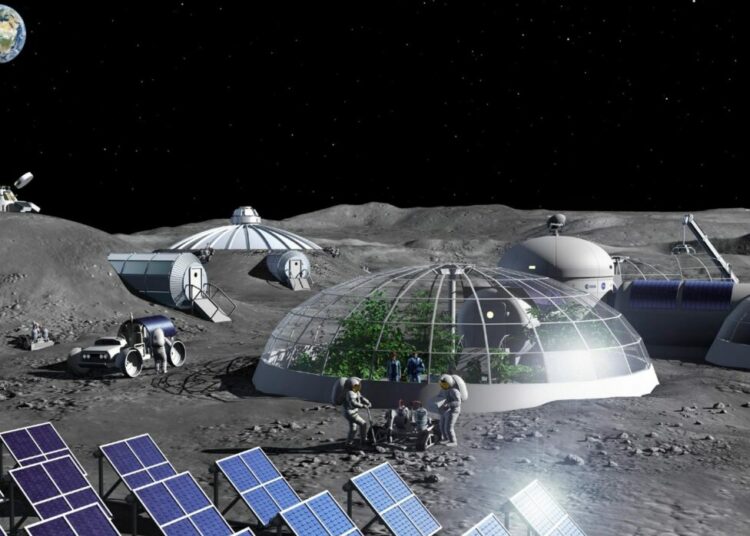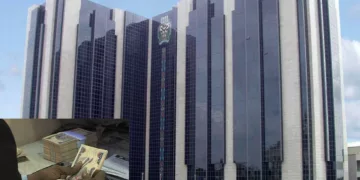The Superpowers of world politics, the United States of America (USA), China, and Russia, are in a race already generating trepidation because of its implications for humanity. These countries aspire to build nuclear reactors on the moon by 2030.
Russia, still at war in Ukraine, is not missing this opportunity that is essentially an ego trip reminiscent of the nuclear arms race that was barely checked by Henry Kissinger’s policy of Détente.
Coming on the heels of the 80thanniversary of the explosion of atomic bombs in Hiroshima and Nagasaki, Japan, and their near cataclysmic effect in the areas affected by the weapon, the concern is genuine. The United States believes the misadventure ended the Second World War, even at a significant cost to lives and property. Reliving that horrendous spectacle perpetrated by the US as the first country to use a weapon of mass destruction in a war situation, humanity is aghast at the prospect of a nuclear facility out there in space.
This feeling is more pronounced as the proliferation of nuclear technology that was under control until recently, is beginning to escalate since the Donald Trump administration revisited its country’s defence policy around the world, especially in Europe and parts of Asia – Japan and South Korea.
There is a pervasive apprehension that nuclear facilities in the hands of some nations are inadvisable. That explains the pressure on Iran to abandon its nuclear programme just as India and Pakistan, armed with nuclear weapons, are bellyaching and instilling fear in the minds of the world.
Now, Russia, at war with Ukraine, has escalated its security alert to the highest level as Trump orders two nuclear submarines to loiter around the region.
As all these are playing out, the United States’ Transportation Secretary, Sean Duffy, who is also the interim head of the National Aeronautics and Space Administration (NASA), said building a nuclear reactor on the lunar surface is of security importance to his country, as the International Space Station (ISS) will soon expire. In his opinion, without the ISS, only the People’s Republic of China would still have a manned space station. To him, that is not acceptable.
According to reports, Duffy is setting a more definitive timeline intended to fast-track the process. Curiously, NASA is undaunted by the massive budget cuts proposed by Trump’s administration and is pursuing this project with renewed audacity.
All indications are that the US needs a new space station and an energy source on the moon as soon as possible. This heightened anxiety on the part of the Americans is further exacerbated by Russia and China’s plan to build a moon base that includes a nuclear reactor. The proposed base, known as the International Lunar Research Station (ILRS), is for exploring the moon with robots.
Reports indicate that Trump is not amused by this development and is set for a new race with Russia, this time with China as a partner.
This newspaper is worried because nuclear power on Earth is proving a threat that is beginning to seem difficult to contain, as most countries see it as the ultimate show of power and national strength. Either for military or civilian purposes, nuclear power poses a threat to humanity as it is known today.
With the belligerence among world powers, something could go wrong with the mistaken press of a button. In the event of such an unlikely prospect, Hiroshima and Nagasaki will be child’s play because the sheer volume of energy that will be released is enough to decimate humanity as a whole.
Scientists claim that the volume of energy released by a nuclear bomb upon impact can be measured in terms of its yield, typically expressed in kilotons (KT) or megatons (MT) of TNT equivalent. According to them, one kiloton (KT) of trinitrotoluene (TNT), a pale yellow, solid organic nitrogen compound used chiefly as an explosive, prepared by stepwise nitration of toluene. is equivalent to the energy released by 1,000 tons of TNT, and one megaton (MT) of TNT is equivalent to 1,000 kilotons or 1,000,000 tons of TNT.
They aver that the energy released by a nuclear bomb on impact can range from a few kilotons to several megatons, making them among the most powerful explosive devices known to humanity. Modern nuclear weapons can have yields ranging from a few kilotons to several megatons. For instance, some thermonuclear devices can have yields exceeding one megaton.
On April 26, 1986, the Number Four RBMK, a Soviet-designed nuclear reactor that uses enriched uranium as its fuel, at the nuclear power plant at Chernobyl, Ukraine, went out of control during a test at low power, leading to an explosion and fire that demolished the reactor building and released large amounts of radiation into the atmosphere. Safety measures were ignored, the uranium fuel in the reactor overheated and melted through the protective barriers.
Consequently, radioactive elements, including plutonium, iodine, strontium, and caesium, were scattered over a wide area. In addition, the graphite blocks used as a moderating material in the RBMK caught fire at high temperatures as air entered the reactor core, contributing to the emission of radioactive materials into the environment.
It is not safe for anyone’s health to begin to imagine what will happen to our planet in the event of such a miscalculation in space.
To this extent, therefore, we implore the superpowers to rein in their ambition and save humanity.
We’ve got the edge. Get real-time reports, breaking scoops, and exclusive angles delivered straight to your phone. Don’t settle for stale news. Join LEADERSHIP NEWS on WhatsApp for 24/7 updates →
Join Our WhatsApp Channel










